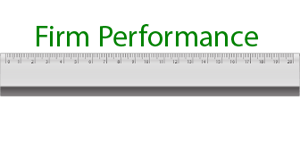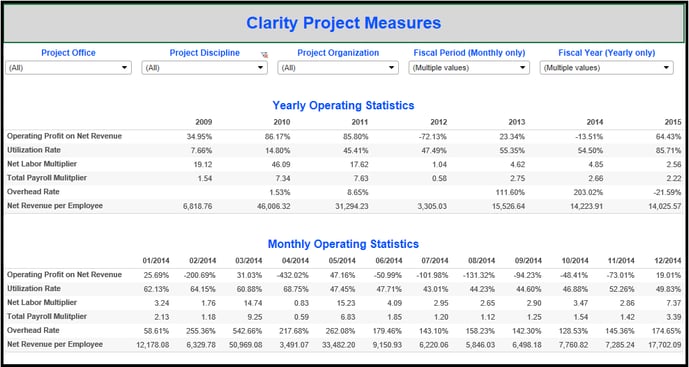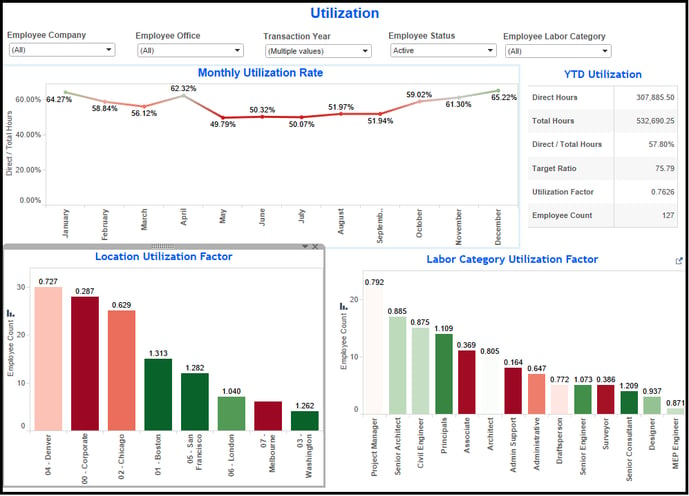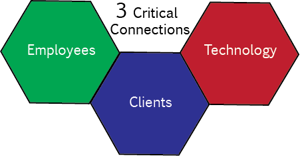New Year’s Resolutions for Business Development and Marketing Professionals
 After the ball drops every New Year’s Eve, the song “Auld Lang Syne” triggers everyone to begin a personal reflection of the past. Similarly, at the end of a year and on a professional level, business development and marketing professionals should look back at the previous year and evaluate the results of their efforts. How they use this information will help them strategize for the following year and improve upon performance. Here are some New Year’s resolutions that business development and marketing professionals should make to get the most out of next year.
After the ball drops every New Year’s Eve, the song “Auld Lang Syne” triggers everyone to begin a personal reflection of the past. Similarly, at the end of a year and on a professional level, business development and marketing professionals should look back at the previous year and evaluate the results of their efforts. How they use this information will help them strategize for the following year and improve upon performance. Here are some New Year’s resolutions that business development and marketing professionals should make to get the most out of next year.
New Year’s Resolutions for Business Development
Improving client relationships is essential to generating more sales and revenue. Here are five ways to help nurture better client relationships.
- Streamline your client engagement/touchpoint activities. Distill your activities to the essentials to shorten sales cycles while providing high-value interactions with clients and prospects.
- Get to know your clients better. Ask the right questions and actively listen to the client’s answers.
- Coordinate and collaborate with the marketing team on a regular basis.
- Embrace new technology. Communicate with prospects and clients and record information gained. Share this information with internal teams.
- Stop checking in. Instead, use your database to connect with prospects using meaningful conversations or useful content.
New Year’s Resolutions for Marketers
While marketing requires evaluating the performance of efforts throughout the year, using this data to become more effective for the next year is a difficult task. Here are five ways marketers can increase the impact of marketing plans for the new year.
- Examine last year’s marketing campaigns and see which ones met your goals. Determine how you will use this information for next year’s planning.
- Take a hard look at your process for collecting and maintaining your information/data. Make it a goal to get all your data centralized into one place.
- Coordinate and collaborate with the business development/sales teams on a regular basis.
- Create high-quality, value-based content that your clients and prospects need.
- Understand the client experience journey from prospect to project delivery. How can you, as a marketer, improve your client experience to differentiate your firm?
Increase Business and Revenue in 2018!
With the New Year comes the potential to increase sales goals and revenue. This is the best time to make changes and adjustments to business development and marketing strategies. Follow these New Year’s resolutions to be more productive in your marketing and business development efforts for 2018.



 Charles Darwin once said, “it is not the strongest of the species that survives, nor the most intelligent, but the one most responsive to change.” In the 21st century, with constantly evolving technology and ever present social media, competition for the same resources has dramatically increased. Firms must adapt to their new environments or risk extinction. Change management, the approach used to prepare, equip and support individuals to successfully adopt change and thus drive organizational success, is vital to a firm’s continued existence.
Charles Darwin once said, “it is not the strongest of the species that survives, nor the most intelligent, but the one most responsive to change.” In the 21st century, with constantly evolving technology and ever present social media, competition for the same resources has dramatically increased. Firms must adapt to their new environments or risk extinction. Change management, the approach used to prepare, equip and support individuals to successfully adopt change and thus drive organizational success, is vital to a firm’s continued existence.
 The long-term success of a sports team cannot be determined by looking at just one factor. For a sports team to truly excel, it must triumph on many fronts. From scouting the best talent to strategizing offensive and defensive plays for cohesive team execution, the team manager must create a winning formula that, when utilized, brings continuous success for the team. This is also true for professional services firms, and finding the right formula for your team can become less of a guessing game with the tools available from Deltek. Let’s see how Deltek can help your firm knock it out of the park.
The long-term success of a sports team cannot be determined by looking at just one factor. For a sports team to truly excel, it must triumph on many fronts. From scouting the best talent to strategizing offensive and defensive plays for cohesive team execution, the team manager must create a winning formula that, when utilized, brings continuous success for the team. This is also true for professional services firms, and finding the right formula for your team can become less of a guessing game with the tools available from Deltek. Let’s see how Deltek can help your firm knock it out of the park.
 Many professional services organizations are under the false impression that proposal automation is not worth the investment. While copying and pasting previous Request for Proposal (RFP) submissions may seem expedient, it is not really the case as firms must tailor them to the unique needs of each new proposal. Let’s review a few reasons why proposal automation will benefit your firm if it is incorporated into the bidding process.
Many professional services organizations are under the false impression that proposal automation is not worth the investment. While copying and pasting previous Request for Proposal (RFP) submissions may seem expedient, it is not really the case as firms must tailor them to the unique needs of each new proposal. Let’s review a few reasons why proposal automation will benefit your firm if it is incorporated into the bidding process. You are having a great year, business is steadily growing and employees are happy. With continuing growth in mind, you acknowledge that to meet future workload needs, your firm should contemplate acquiring a similar firm. Therefore, it becomes time to think about Mergers & Acquisitions (M&A).
You are having a great year, business is steadily growing and employees are happy. With continuing growth in mind, you acknowledge that to meet future workload needs, your firm should contemplate acquiring a similar firm. Therefore, it becomes time to think about Mergers & Acquisitions (M&A).
 As the leaves change from a cool green to the burning hues of fall, you can almost hear the annual groan that emanates from marketing and business development departments everywhere as we ponder next year’s budgets. We’re feverishly cramming numbers into spreadsheets, struggling to get that final hit rate report from the ERP system, and perhaps even consulting with a local palm reader, all with the goal of accurately predicting the future - next year’s sales!
As the leaves change from a cool green to the burning hues of fall, you can almost hear the annual groan that emanates from marketing and business development departments everywhere as we ponder next year’s budgets. We’re feverishly cramming numbers into spreadsheets, struggling to get that final hit rate report from the ERP system, and perhaps even consulting with a local palm reader, all with the goal of accurately predicting the future - next year’s sales!
 Knowing how your AE firm compares to your peers is critical for evaluating the health of your business. Fortunately, regularly monitoring your firm’s performance doesn’t have to be a challenge for Deltek Vision users. In this article, we’ll take a quick look at the background of the AE Clarity study and introduce the Vision Performance Management (VPM) interactive dashboard.
Knowing how your AE firm compares to your peers is critical for evaluating the health of your business. Fortunately, regularly monitoring your firm’s performance doesn’t have to be a challenge for Deltek Vision users. In this article, we’ll take a quick look at the background of the AE Clarity study and introduce the Vision Performance Management (VPM) interactive dashboard.


 Sales is a tough industry where success is measured by attaining goals and quotas. So why are some sales people more successful than others? The reality is, selling and buying are not completely an intellectual process and actually requires building an emotional relationship. In order for you to be a great seller, several of these personality traits should characterize you.
Sales is a tough industry where success is measured by attaining goals and quotas. So why are some sales people more successful than others? The reality is, selling and buying are not completely an intellectual process and actually requires building an emotional relationship. In order for you to be a great seller, several of these personality traits should characterize you.
 Let’s admit it, running a business has plenty of challenges. Why create more by overlooking the critical connections that support your business? Throughout my tenure as a business owner and entrepreneur, I have found three connections a business must have to reduce the challenges. These are connections with employees, clients, and technology. Let’s take a look at the importance of these three connections.
Let’s admit it, running a business has plenty of challenges. Why create more by overlooking the critical connections that support your business? Throughout my tenure as a business owner and entrepreneur, I have found three connections a business must have to reduce the challenges. These are connections with employees, clients, and technology. Let’s take a look at the importance of these three connections.